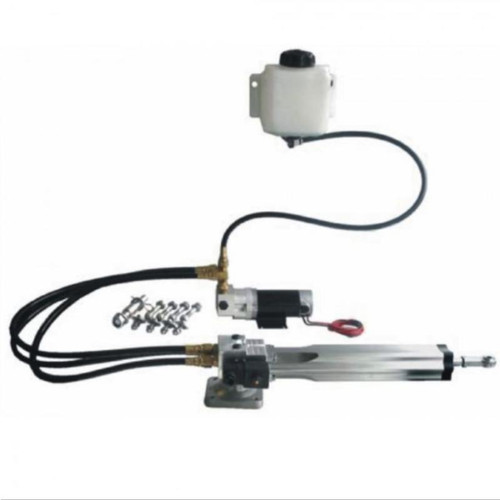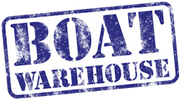-

Raymarine
Raymarine Hydraulic Linear Drive - Type 2 - Boats Up To 22 tonnes
Raymarine Hydraulic Linear Drive - Type 3 for boats up to 22 tonnes Designed for larger mechanically steered vessels over 20,000kg, Raymarine's hydraulic linear drives are self-contained hydraulic steering systems consisting of a reversing pump,...
-

Raymarine
Raymarine Hydraulic Linear Drive - Type 3 - Boats Up To 35 tonnes
Raymarine Hydraulic Linear Drive - Type 3 for boats up to 35 tonnes Designed for larger mechanically steered vessels over 20,000kg, Raymarine's hydraulic linear drives are self-contained hydraulic steering systems consisting of a reversing pump,...
-

Raymarine
Raymarine Mechanical Rotary Drive - Type 2 - Boats Up To 20 tonnes
Raymarine Mechanical Rotary Drive - Type 2 for boats up to 20 tonnes. The rotary drive is designed for power and sailboat systems that can be driven from the helm position through a chain and sprocket (e.g. cable and rod steering system). The outstanding...
-

Raymarine
Raymarine Mechanical Linear Drive Unit - Type 2 Long
Raymarine Mechanical Linear Drive Unit - Type 2: Long Shaft Linear Drive 12V & 24V Mechanical Linear Drives are Raymarine's most commonly used drive types for sailing vessels. Mechanical linear drives provide powerful thrust, fast hard-over times...
-

Raymarine
Raymarine Mechanical Linear Drive Unit - Type 2 Short
Raymarine Mechanical Linear Drive Unit - Type 2: Short Shaft Linear Drive 12V & 24V Mechanical Linear Drives are Raymarine's most commonly used drive types for sailing vessels. Mechanical linear drives provide powerful thrust, fast hard-over times...
-

Raymarine
Raymarine Hydraulic Steering Pump - Type 2
Raymarine Hydraulic Steering Pump - Type 2 Raymarine Evolution pilots connect to hydraulic steering systems using a rugged hydraulic pump matched to the capacity of the hydraulic steering system. If your system is hydraulic... You'll need to find out...
-

Raymarine
Raymarine Hydraulic Steering Pump - Type 3
Raymarine Hydraulic Steering Pump - Type 3 Raymarine Evolution pilots connect to hydraulic steering systems using a rugged hydraulic pump matched to the capacity of the hydraulic steering system. If your system is hydraulic... You'll need to find out...
-

Raymarine
Raymarine Hydraulic Steering Pump - Type 1
Raymarine Hydraulic Steering Pump - Type 1 Raymarine Evolution pilots connect to hydraulic steering systems using a rugged hydraulic pump matched to the capacity of the hydraulic steering system. If your system is hydraulic... You'll need to find out the...
Marine Electronics
Marine electronics are a vital part of any boat, providing navigation, communication, and entertainment. The most common marine electronics include:
- GPS/Chartplotter: This is a device that uses satellite signals to determine your boat's position and display it on a map. Chartplotters also typically have features for planning routes, calculating distances, and viewing weather forecasts.
- Multifunction Display (MFD): An MFD is a type of chartplotter that also integrates other marine electronics, such as radar, fishfinder, and engine monitoring. This makes it a more versatile and convenient way to view all of your boat's data.
- Engine Monitor: This device displays information about your boat's engine, such as RPM, fuel level, and temperature. This information can be helpful for troubleshooting problems and ensuring that your engine is running properly.
- Depth Sounder/Fishfinder: This device uses sonar to measure the depth of the water and locate fish. It is a valuable tool for both safety and fishing.
- VHF Radio: This is a radio that uses VHF frequencies to communicate with other boats and shore stations. It is an essential piece of safety equipment, as it can be used to call for help in an emergency.
- Wi-Fi and Cellular Range Boosters: These devices can extend the range of your boat's Wi-Fi and cellular signal, allowing you to stay connected even when you are far from shore.
- Battery Monitoring System: This device tracks the health of your boat's batteries, providing information such as voltage, current, and temperature. This information can be helpful for preventing battery problems.
- AIS: AIS stands for Automatic Identification System. It is a system that allows boats to transmit their position, course, and speed to other boats and shore stations. This information can be used to avoid collisions and improve situational awareness.
These are just some of the most common marine electronics. The specific electronics that you need on your boat will depend on your needs and budget. However, even a basic set of marine electronics can make your boating experience safer and more enjoyable.
Here are some additional tips for choosing marine electronics:
- Consider the size of your boat and the features that you need.
- Choose a reputable brand.
- Make sure that the electronics are compatible with each other.
- Have the electronics professionally installed.
- Keep the electronics clean and well-maintained.
With careful planning and installation, your marine electronics can provide years of reliable service.
